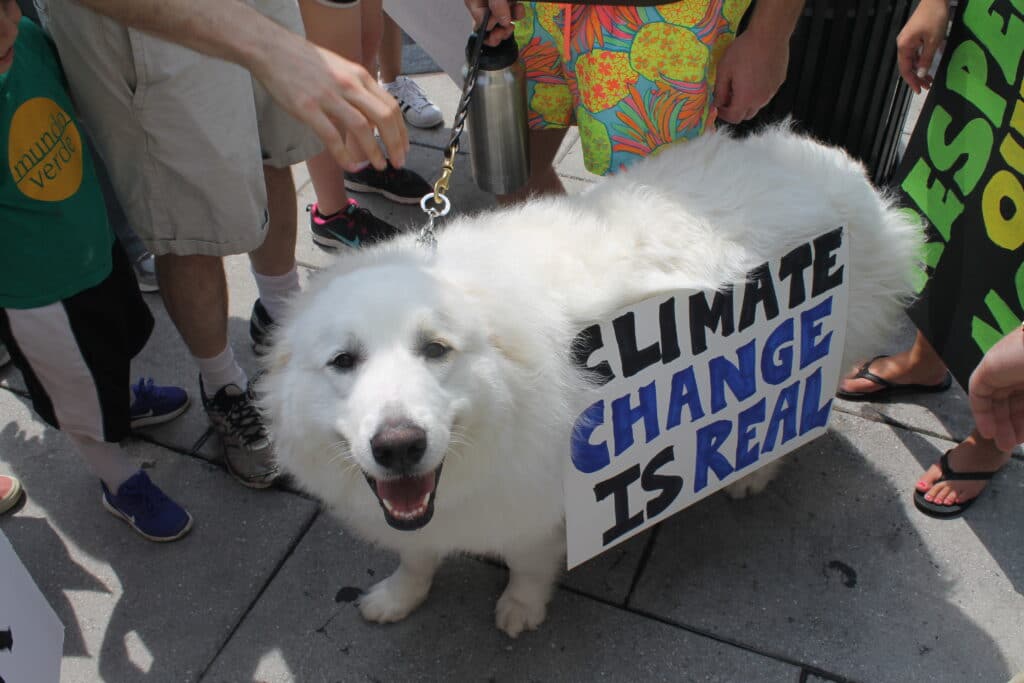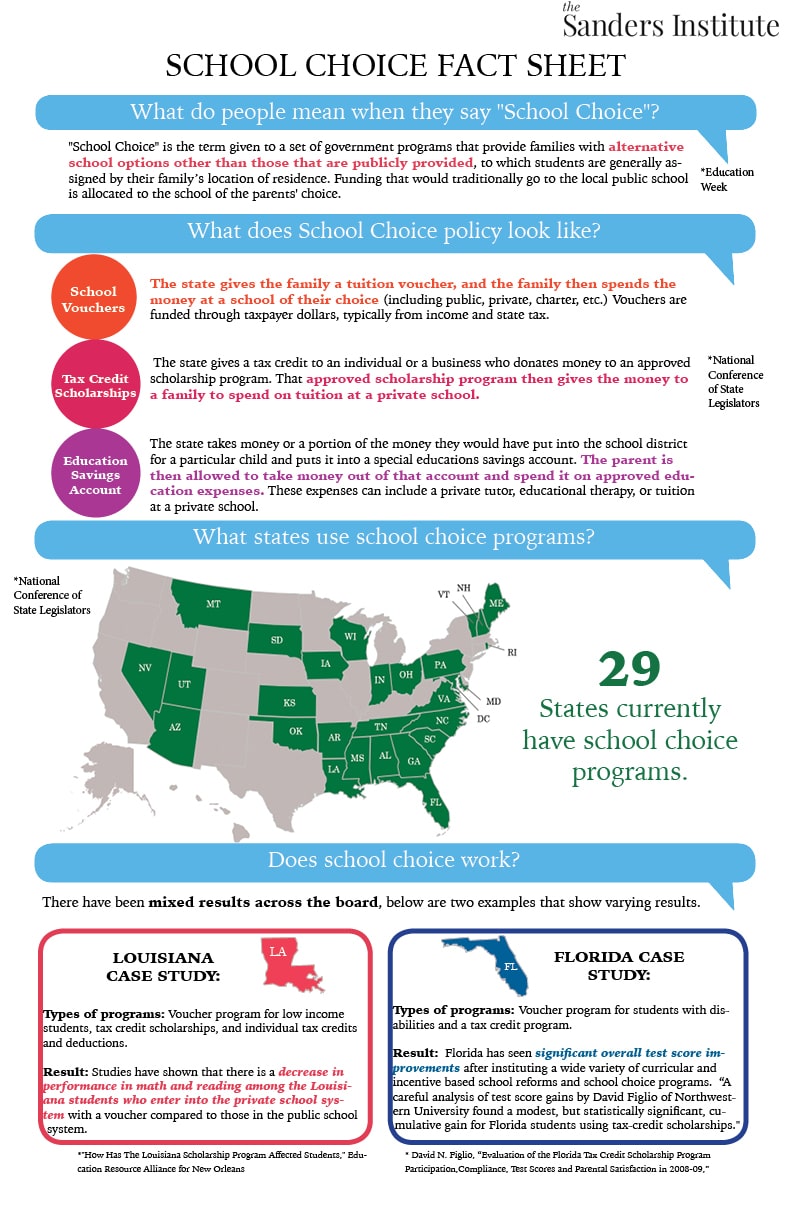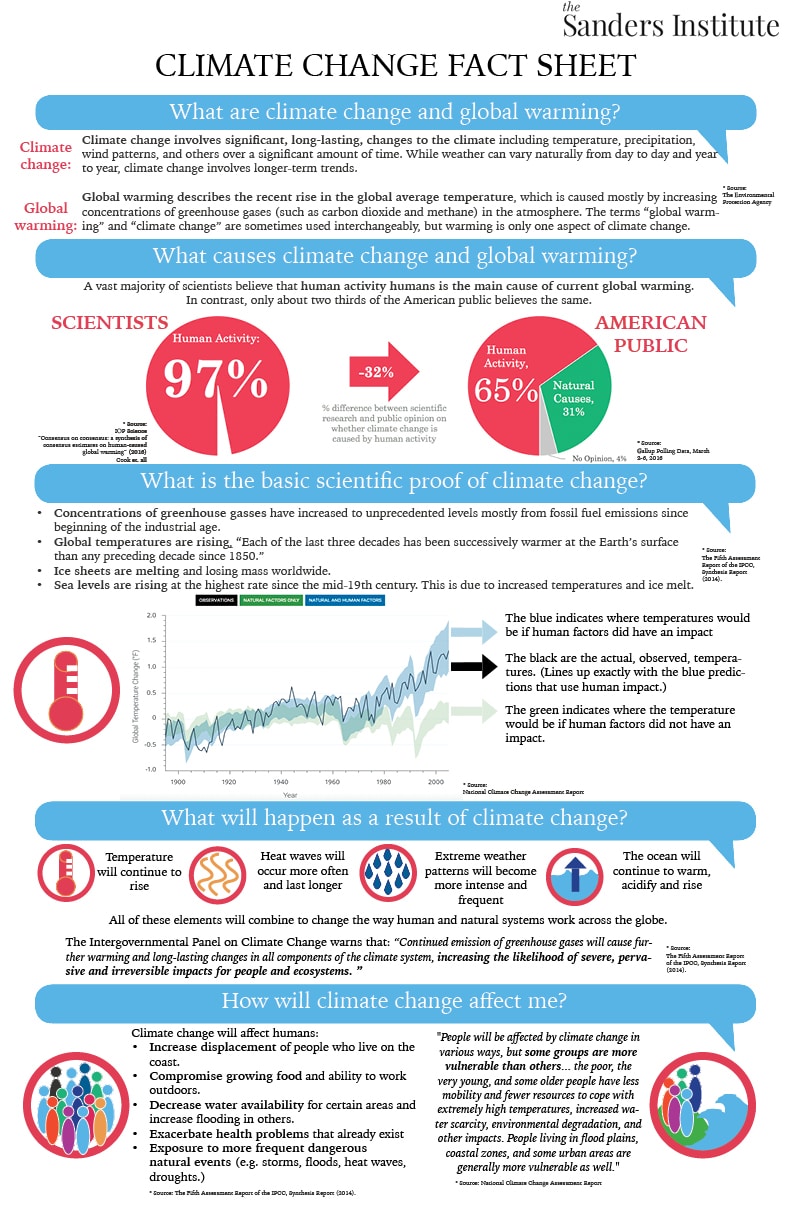Below is a compilation of science-based signs that The Sanders Institute team put together for the Climate March. We also sought out signs from other marchers with scientific facts.
We have included links along with each image to the science behind each of the facts or more information about the topic of the non-Sanders Institute signs.
Facts:
- According to NASA, 2017 saw the lowest winter sea ice coverage on record.
- The EPA estimates that the average car emits 4.7 metric tons of carbon dioxide into the atmosphere per year.
- According to NASA, 16 of the 17 warmest years on record have been since 2001.
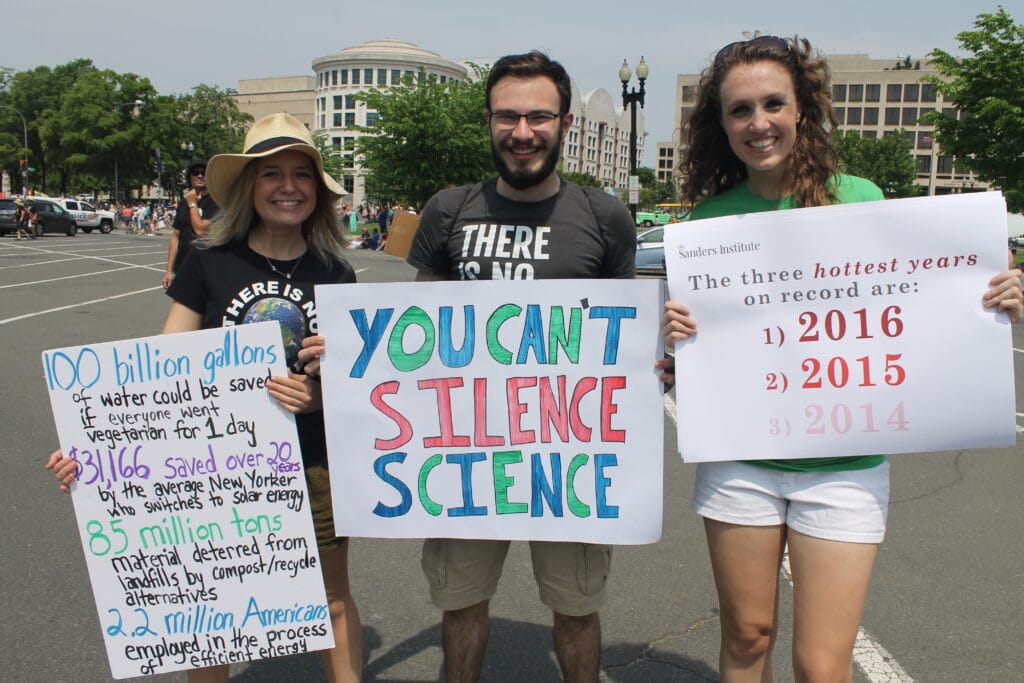
Facts:
- To read more on the impact of eating vegetarian, see this article from IOP science.
- Solar Nation helpfully gives facts and quotes for switching to solar power.
- To read more about recycling in the United States see this EPA fact sheet.
- According to NASA, the three hottest years on record have been the past three years.

Facts:
- According to a 2015 scientific paper “Mapping Tree Density at a Global Scale,” humans cut down over 15 billion trees a year.
- To read more about polar bears, see this article by the National Wildlife Federation which lists a number of facts about the Polar Bear population and how they are affected by climate change.
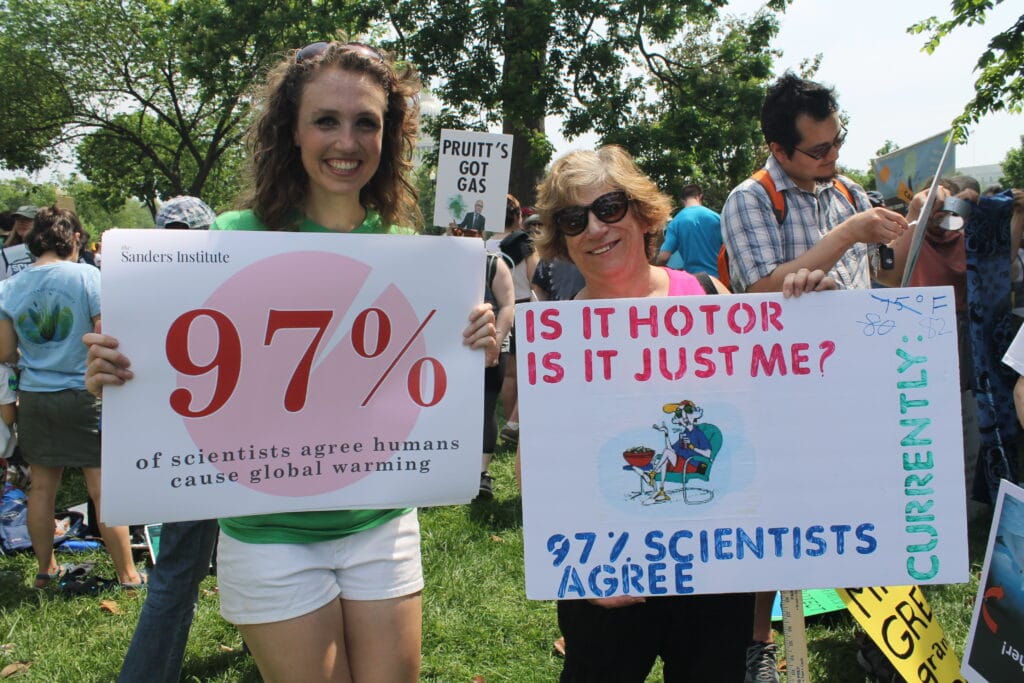
Facts:
- According to NASA: “Multiple studies published in peer-reviewed scientific journals show that 97 percent or more of actively publishing climate scientists agree: Climate-warming trends over the past century are extremely likely due to human activities.”
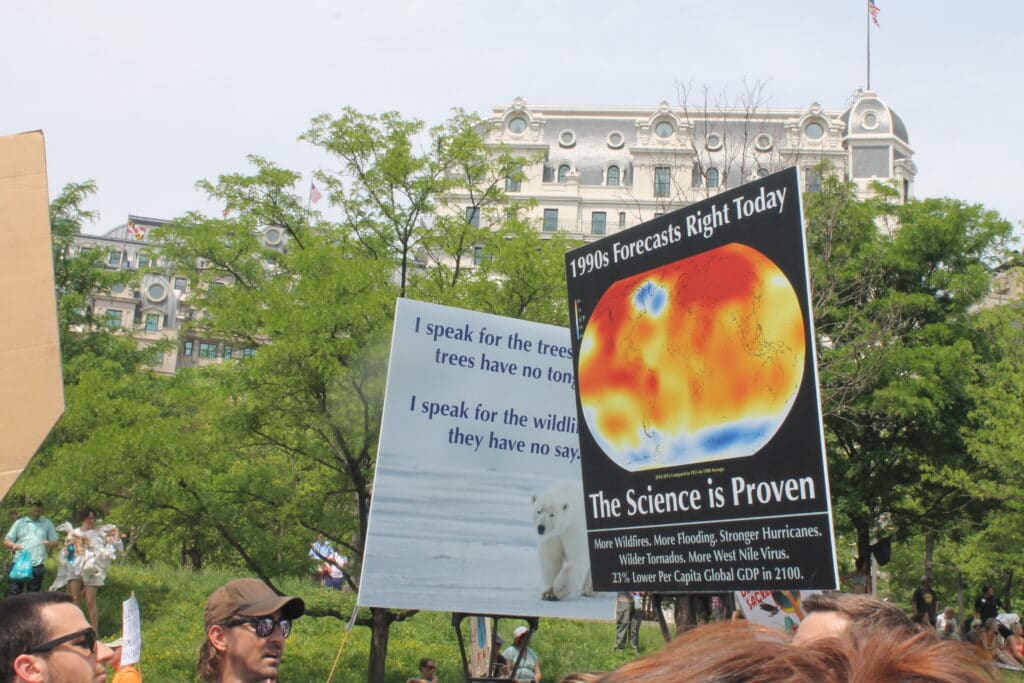
Facts:
- To read more about climate predictions that have come true or underestimated the rate and severity of climate change, see these articles from Scientific American.

Facts:
- To read about the benefits of renewable energy see this article from the Union of Concerned Scientists.
And finally…
